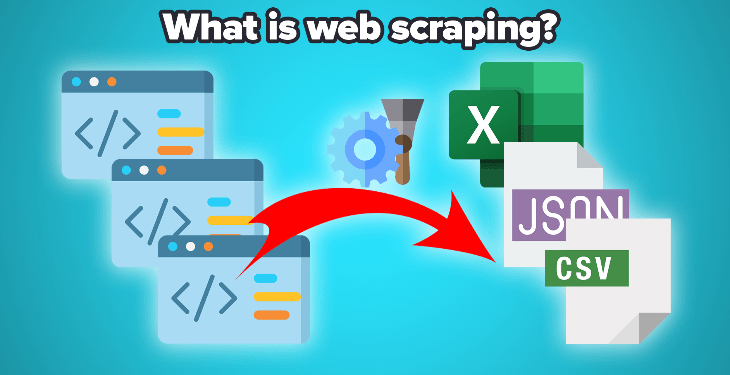
Web scraping is the process of extracting data from websites. This data can be used for a variety of purposes, such as market research, price monitoring, and product comparison.
Web scraping can be done manually, but this is a time-consuming and tedious process. There are a number of software tools that can automate the web scraping process, making it much faster and easier.
There are two main types of web scraping:
- Scraping static websites: This type of web scraping involves extracting data from websites that do not change frequently. This type of web scraping is relatively easy to do, as the data is typically located in the same place on the website.
- Scraping dynamic websites: This type of web scraping involves extracting data from websites that change frequently. This type of web scraping is more difficult to do, as the data may not be located in the same place on the website.
There are a number of different tools that can be used for web scraping. Some of the most popular tools include:
- Beautiful Soup: This is a Python library that is used for web scraping. Beautiful Soup is a powerful tool that can be used to extract data from a variety of websites.
- Selenium: This is a tool that can be used to automate the browsing of websites. Selenium can be used to extract data from websites that require human interaction, such as those that require logins or CAPTCHAs.
- Octoparse: This is a web scraping tool that is designed for non-technical users. Octoparse is a user-friendly tool that can be used to extract data from a variety of websites.
Web scraping is a powerful tool that can be used to extract data from websites. However, it is important to use web scraping responsibly. If you are scraping a website, it is important to make sure that you are not violating the website’s terms of service.
How to use web scraping
There are a few steps involved in using web scraping:
- Identify the data you want to extract. What data do you want to extract from the website? This could be product prices, product descriptions, contact information, or anything else that is available on the website.
- Find the data on the website. Where is the data that you want to extract located on the website? This may require some manual inspection of the website to find the data.
- Use a web scraping tool to extract the data. There are a number of different web scraping tools available, so you will need to choose one that is appropriate for your needs.
- Save the data. Once you have extracted the data, you will need to save it in a format that you can use. This could be a CSV file, a JSON file, or any other format that you can open and read.
Here are some additional tips for web scraping:
- Use a proxy server to hide your IP address. This will help to protect your privacy.
- To prevent being prohibited by websites, use a bot management service.
- Don’t scrape too much data at once. This could slow down the website or even get you banned.
By following these tips, you can help ensure that you’re using web scraping responsibly.
Conclusion
Web scraping is a powerful tool that can be used to extract data from websites. By following the steps above, you can use web scraping to extract the data that you need. However, it is important to use web scraping responsibly and to make sure that you are not violating the website’s terms of service.







